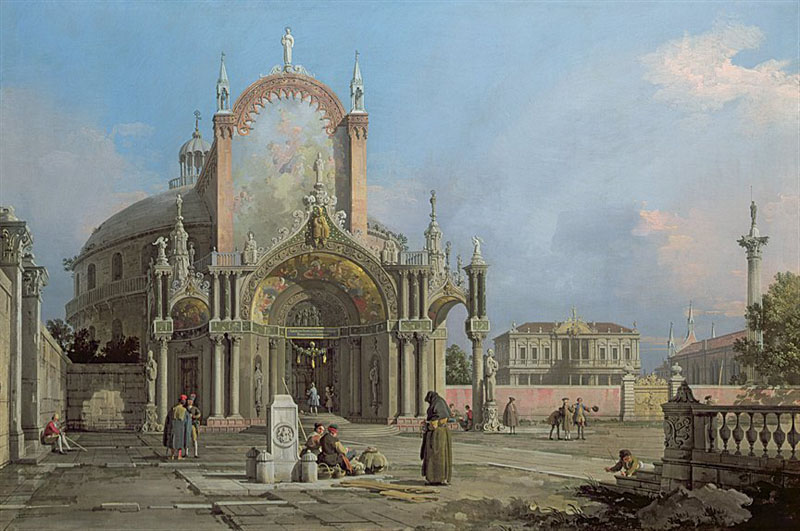145. Caprice with Church, c. 1750.
Oil on canvas, 100.3 x 146.1 cm.
Arundel Castle, Arundel.
Painting is one of the most significant modes of expression in the moral life of a nation. In any nation’s history, there can always be found a short period separating exclusively bellicose mores from Epicurean mores, a unique period during which popular energy, no longer spent in the enterprises of war, blooms into the splendid flora of art. The great Venetians, from Bellini through Tintoretto, emerged at the precise moment when their contemporaries, still with a taste for the heroic, eagerly searched to embellish the façade of life. But soon sensualism would alter this religious spirit and these strong passions; soon, there were no more victories to glorify, no more triumphal pomp to carry out, nor any of those illustrious settings such as Veronese had painted, the lush feasts where guests were served on gold and silver plates among their pages, jesters and greyhounds, with all the lavish trappings that went along with Venetian style. It was in this atmosphere that the host of fine masters of the eighteenth century made their appearance. Far from leading a school, implying a far too strenuous exertion, they created an art of ephemeral novelty. Though never aiming for a specific style, they at least knew, depicting real life scenarios and reproducing the beauty of surrounding buildings, and how to relish in good humour and brio.
Canaletto, Francesco Guardi and even Pietro Longhi’s works achieve a convincing illusion of reality. Thanks to their paintings, we can still see today this fantastic city that, with each passing day, joyfully moves one step further into decline. How many people, never having been to Venice, believe that they know this city thanks to these artists? All these painters, on almost the same level as the greatest masters, contributed to their homeland’s fame. And if ever this marvellous city, compared in a gondolier song to Venus born of the foamy sea, were to disappear, if ever her crumbling architecture were to drown in the waters of the Adriatic, more than a mere memory would survive of her, thanks to the paintings and engravings of Canaletto and his contemporaries.
